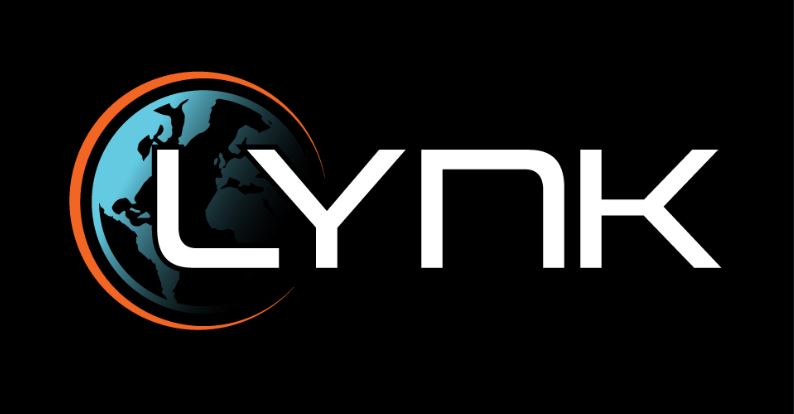Lynk announces deployments, plans for spring satellite-direct-to-phone commercial service
Lynk Global this week announced the deployment of two more low-Earth-orbit (LEO) satellites and reiterated plans to begin offering the first commercial satellite-direct-to-standard-phone services with carrier partners in the spring, according to Lynk CEO Charles Miller.
Lynk’s long-term goal is to augment the wireless coverage of mobile network operators (MNOs) with LTE 4G and 5G broadband services delivered from LEO satellites to unmodified cellular devices, but its initial service will be strictly a text-based application. These LEO satellites are designed to function as cell towers, with the Lynk constellation effectively acting as a roaming partner in space that supports terrestrial operators.
With the deployment of two satellites—one with a 5G payload—early this month as part of a SpaceX Transporter mission, Lynk now has three commercial satellites in orbit and expects to begin providing text-based commercial services with its 25 carrier partners throughout the year, beginning in the spring, Miller said.
“We’re shooting for April [to launch commercial service],” Miller said during an interview with IWCE’s Urgent Communications. “There are three technical boxes that we need to check off before we get to that, but we could have initial commercial service as soon as April.
“We’ll start with messaging, and we’ll grow to broadband.”
In September, the FCC approved Lynk deploying 10 initial LEO satellites—the first commercial licenses granted in the nascent satellite-direct-to-phone industry. Miller said that Lynk could deploy another two or three satellites in May or June, but that has not been finalized yet. Miller did not provide a timetable for other potential satellite launches.
Lynk ultimately hopes to deploy about 5,000 of its small LEO satellites to support high-capacity broadband services worldwide, but its nearer-term plans call for the deployment of slightly less than 1,000 satellites by 2025, which would provide continuous global coverage with some broadband services.
To achieve this goal, Lynk clearly needs to accelerate its rate of deploying LEO satellites. One significant success of this month’s launch was the successful execution by a new deployer system that supports the launch of as many as six satellites on the same ESPA-ring port, according to Miller.
“And we could do multiple ports,” he said. “If we take 12 ports, we could do 72 satellites a launch.”
Given this technical capability, Miller said he believes the one key missing ingredient for Lynk is the money necessary to fund the expansion necessary for Lynk’s satellite constellation to make the company’s vision of ubiquitous global broadband coverage a reality.
“The biggest limit is raising capital,” Miller said. “We’re obviously building and launching [satellites], and now we have the ability to half a dozen of them at a time on one port.
“We have the commercial license. We have the satellites. The satellite technology is working. We have the MNO contracts. Now, it’s all about scale and executing.”
Miller said he does not expect significant regulatory pushback from the FCC, given the bipartisan support of all four FCC commissioners and especially with the recent creation of the agency’s new Space Bureau and Office of International Affairs.
“We think it would be rather quick to get the FCC to ramp up more satellites; we don’t think that’s a major barrier,” Miller said. “There are significant national-security and public-safety benefits from more satellites. [Because] there is significant public benefit, we think we’d get the approval.
“So, if we had somebody to write a big check, we think we’d rapidly go to get approval for hundreds of satellites [to be deployed].”
The notion of launching so many satellites so quickly is an indication of the rapid evolution in the satellite industry, which once was known for its years-long planning cycles and a roughly $1 billion investment to launch just a single geosynchronous-equatorial-orbit (GEO) satellite about 22,000 miles from Earth.
Today, LEO satellites orbit just 300 to 500 miles above Earth’s surface and rocket launches by companies like SpaceX are more numerous and relatively inexpensive, when compared to just a couple of decades ago. But Miller said the most significant factor in the changing landscape of satellite economics is the continued evolution of computing, which dictates that processing power continues to improve while form factors shrink.
“If you go back, that was really expensive—it took a really big satellite to have that much processing power, and the power budget to do that was really big,” Miller said. “We’re leveraging Moore’s Law in space for these smaller satellites; it’s fundamentally enabled. We’re leveraging a huge commercial supply chain that goes into phones, computers and modern-day electronics, and we’re using that supply chain in the satellite.
“So, it’s good that we have low-cost, frequent and reliable access to space—certainly SpaceX has made a big difference—but much more important than that is that Moore’s Law is finally disrupting satellite. That is what you are seeing with what Lynk is doing.”
Lynk’s commercial plans begin with offering a periodic text-only service this spring and ultimately providing continuous global broadband coverage in 2025 and beyond. In between, Lynk could enable real-time push-to-talk and other voice services—key capabilities for public safety and other critical-communications sectors—as it deploys enough satellites in specific orbits to provide continuous coverage to a geographic territory, Miller said.
With LEO satellites being about 98% closer to the Earth’s surface than a GEO satellite, the latency associated with traditional services that leverage satellite for backhaul should not be an issue, Miller said. In fact, only 4 milliseconds of latency should be introduced to signals transmitted between a cellular device and one of Lynk’s LEO satellites—a figure that might climb to 20 milliseconds, if all ground-station processing is included, he said.
“The fact that we put the satellites in very low LEO eliminates the latency problem you’re used to [when using satellite services], which is mostly for satellites from GEO or MEO,” Miller said.
Because Lynk’s will not support voice communications initially, the company has not yet tested various types of transitions, such as when a user moves from terrestrial-network coverage to Lynk’s satellite coverage, and vice versa.
The design of Lynk’s system is to make this transition happen “like when you move from one roaming partner to another,” according to Miller.
There may be some issues to work out, but I think we’ll get them solved,” he said.
Lynk’s recent commercial satellite deployments were launched less than three years after the company’s 2020 test in the Falkland Islands proved that sub-1GHz communications between unmodified cellular devices and a LEO satellite could work.
“Three years ago, nobody else believed you could do this,” Miller said. “Now, everybody in the world is like, ‘Me, too!’”
Indeed, the satellite-direct-to-phone space rapidly is getting crowded, based on the flurry of announcements made in the past several months.
AST SpaceMobile is pursuing a similar business model as Lynk, partnering with carriers to augment terrestrial coverage with satellite-direct-to-phone broadband service worldwide—albeit with a satellite constellation of 170 massive LEO satellites, as opposed to Lynk strategy of deploying thousands of small satellites.
AST SpaceMobile announced the unfolding of its BlueWalker 3 satellite in November. BlueWalker 3 will be used to test the AST SpaceMobile technology with multiple carrier partners, including AT&T on the 700 MHz Band 14 spectrum that is licensed to the FirstNet Authority.
In August, T-Mobile and SpaceX announced plans to leverage Starlink LEO satellites to provide a lower-bandwidth satellite-direct-to-phone service that would leverage T-Mobile’s 1.9 GHz spectrum—airwaves that have much worse propagation characteristics than the sub-1 GHz frequencies that Lynk and AST SpaceMobile plan to use.
In September, Apple announced that its iPhone 14 portfolio supports emergency text communications with Globalstar’s satellite network operating on 2.4 GHz technology. The service has been working since November, but it does require users to have a “clear view of the sky” and use an app to point the device properly at the Globalstar satellite.
Early this month, Qualcomm announced at CES that its Snapdragon chipset platform will support communications with Iridium’s LEO satellite constellation that leverages 1.6 GHz spectrum. Cell phones with this capability are expected to be commercially available during the second half of this year.
Despite all of this activity from high-profile players, Miller said he believes that Lynk is “years ahead” of other satellite-direct-to-phone players from a technological standpoint, noting that it already is deploying commercial satellites. In contrast, Lynk’s competitors are in a testing/planning phase or simply lack the capability to expand their services beyond text communications.
















